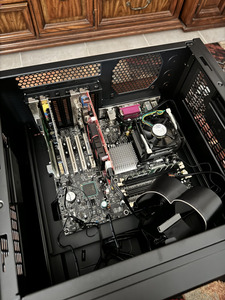wutang61 wrote on 2023-09-30, 16:08:
That’s exactly it. This board was not received well when it was launched due to it being “locked down” only a +4% burn in option allowed for OCing with no voltage control. But what is the common denominator with the comments and reviews is it is a rock stable board at factory settings. Exactly what I’m looking for.
Yup, I've always thought highly of Intel desktop boards, though I think I've only owned one. Part of the issue is that they could be relatively difficult to get - your average enthusiast-flavoured computer store isn't necessarily going to stock them. But generally rock solid and excellent.
And the thing is, what sells motherboards are reviews from the usual web sites. What are the usual web sites looking for more than anything? Overclockability. So if you want to stick that "AnandTech editors' choice" or whatever sticker on your box, well, it needs to overclock well.
It's a shame that Intel got out of the motherboard business, but I understand it - with the near-total-disappearance of store-built non-gaming desktop machines (15+ years ago, any computer store would sell boring computers in boring cases for boring purposes. Now? It's all gamery RGB stuff), there's just no market for boring reliable anymore.
Also, didn't Intel yank a lot of drivers/BIOSes/etc from their web site? The usual Taiwanese suspects (Gigabyte, Asus, MSI, etc) may have their flaws, but if you need a BIOS update for an 18 (or 25) year old motherboard, they've still got that on their web site today. Same with drivers, etc.
That being said, there's another reason Intel boards wouldn't be popular for retro use, which is that for retro use, you often most want the weird combination, e.g. the LGA775/i865 AGP boards. LGA775 processors were never "officially" supposed to be used on i865 chipsets, but hey, the bus is electrically compatible, so, sure, someone in Taiwan is going to make a motherboard to let you buy a new CPU and keep your DDR1 RAM and AGP video card. And then, wait a second, the next generation of LGA775 CPUs needs different voltage regulators but is again otherwise compatible, so a smaller number of folks in Taiwan are going to offer a board like that, etc, until eventually only Asrock is doing it. And then that Asrock board becomes a legend. Intel would have never offered motherboards with mismatched components like that. Similarly, I think Taiwan has made things like socket 370 440BX boards, AGP AM2 boards, dual-socket boards for non-officially-dual-processor processors, i815 Tualatin boards, etc., all things outside what Intel (or AMD) wanted to see exist.
